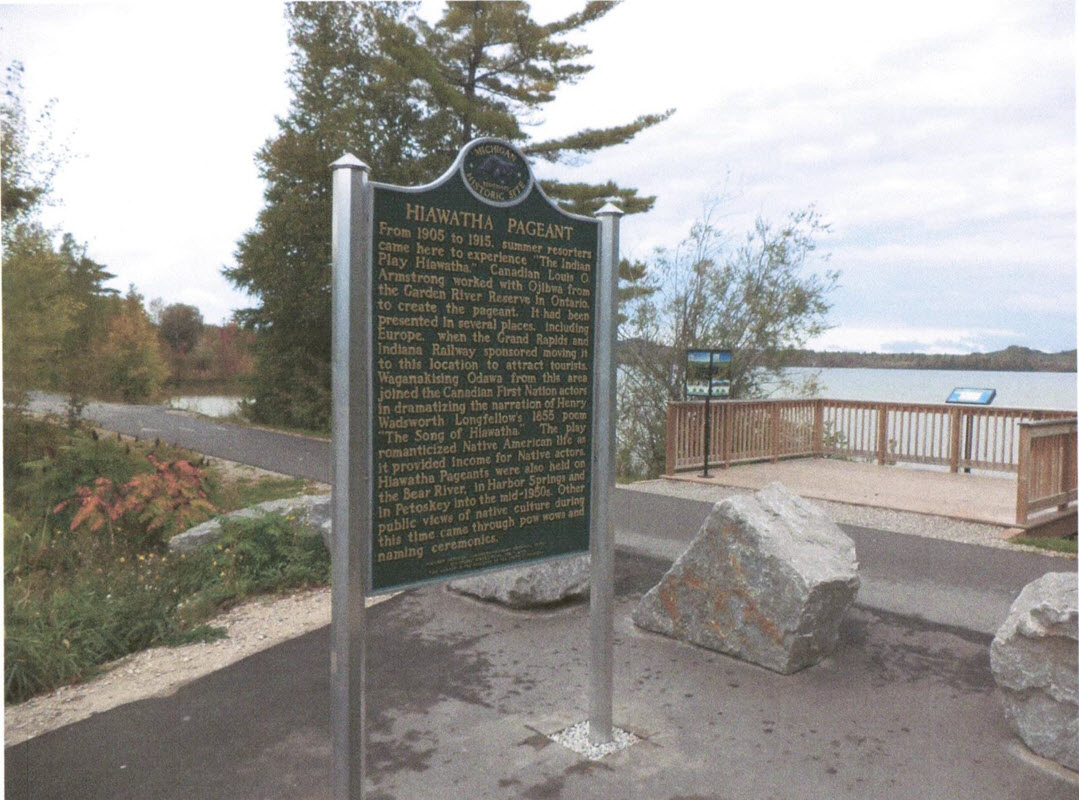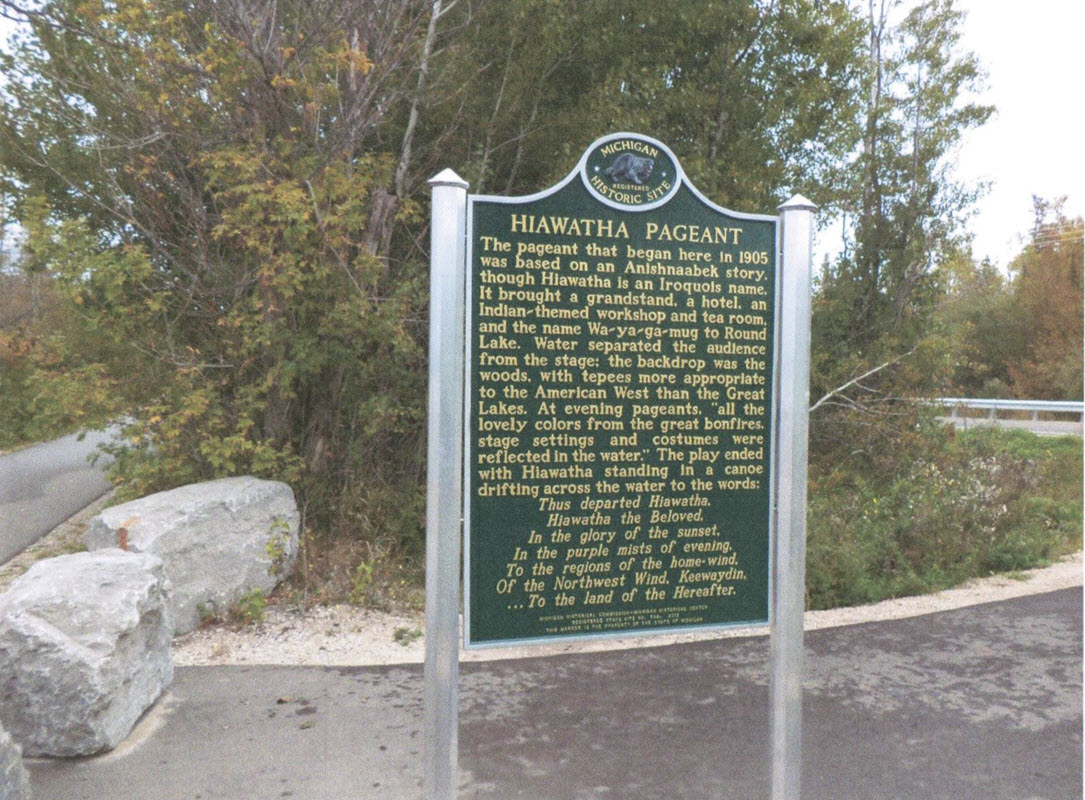Hiawatha Pageant
From 1905 to 1915, summer resorters came here to experience “The Indian Play Hiawatha.” Canadian Louis O. Armstrong worked with Ojibwa from the Garden River Reserve in Ontario, to create the pageant. It had been presented in several places, including Europe, when the Grand Rapids and Indiana Railway sponsored moving it to this location to attract tourists. Waganakising Odawa from this area joined the Canadian First Nation actors in dramatizing the narration of Henry Wadsworth Longfellow’s 1855 poem “The Song of Hiawatha.” The play romanticized Native American life as it provided income for Native actors. Hiawatha Pageants were also held on the Bear River, in Harbor Springs and in Petoskey into the mid-1950s. Other public views of native culture during this time came through pow wows and naming ceremonies.The pageant that began here in 1905 was based on an Anishnaabek story, though Hiawatha is an Iroquois name. It brought a grandstand, a hotel, an Indian-themed workshop and tea room, and the name Wa-ya-ga-mug to Round Lake. Water separated the audience from the stage; the backdrop was the woods, with tepees more appropriate to the American West than the Great Lakes. At evening pageants, “all the lovely colors from the great bonfires, stage settings and costumes were reflected in the water.” The play ended with Hiawatha standing in a canoe drifting across the water to the words:
Thus departed Hiawatha,
Hiawatha the Beloved.
In the glory of the sunset,
In the purple mists of evening,
To the regions of the home-wind,
Of the Northwest Wind, Keewaydin,
… To the land of the Hereafter.

Plaque via Michigan History Center